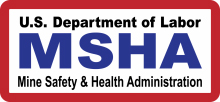Even though the Occupational Safety & Health Administration’s (OSHA) rule on respirable crystalline silica is now being enforced, a number of businesses undoubtedly have lingering questions about the rule’s impact on them.
BossTek’s Mike Lewis, for one, can attest to some of the confusion that exists in the marketplace.
“There’s been a huge uptick in calls related to the silica standard,” says Lewis, sales manager at BossTek, in an early summer conversation. “I feel like 50 percent of the calls lately all reference that silica rule.”
Among the questions Lewis’ customers are asking: Does OSHA’s rule apply to us? What measures should be taken to be in compliance with the rule? And what are the consequences of non-compliance?
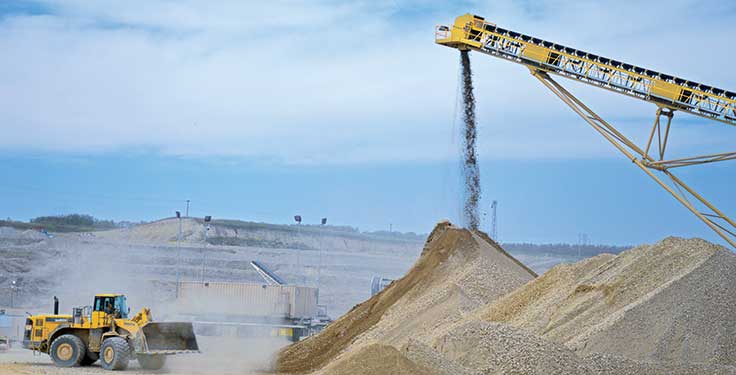
The rule’s applicability
According to Adele Abrams, an attorney whose practice is focused on occupational and mine safety and health, operations that fall under the regulatory purview of the Mine Safety & Health Administration (MSHA) are not obligated to meet OSHA’s silica standard. MSHA has tabled implementation of its own silica rule for the moment, she says, but the topic remains on the agency’s regulatory agenda.
When developed, though, MSHA’s rule will likely mirror OSHA’s rule, according to Abrams.
“MSHA has had this on their regulatory agenda as long as OSHA has been working on this rule,” Abrams says. “MSHA just came out with a new semi-annual regulatory agenda – the first under the Trump administration. They nuked about 90 percent of what was left on the Obama administration’s regulatory agenda.”
Yet silica remains on the agenda, she says.
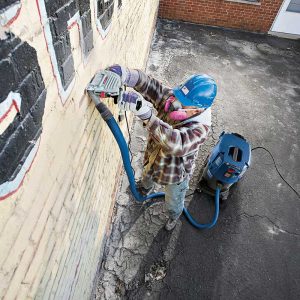
“It’s to be determined,” Abrams says. “We’re very emphatic that what they do is going to parallel the OSHA rule.”
For construction, compliance with OSHA’s rule means providing a work environment that reduces the permissible exposure limit (PEL) of crystalline silica to 50 micrograms per cubic meter (µg/m3) averaged over an eight-hour shift, with an action level of 25 µg/m3. A number of industries have argued over the last year and a half that the previous limit (100 µg/m3) was protective when reliably enforced and complied with, adding that silica-related disease has dropped dramatically over the course of four decades since a PEL was put in place.
Enforcement of the OSHA standard was slated to come online early this summer, but the agency delayed enforcement to conduct additional outreach and provide educational materials and guidance for employers. At press time, the standard was still slated to be enforced Sept. 23 for the construction sector, with enforcement for general industry commencing June 23, 2018. Some OSHA “state plan states,” including Virginia, began enforcement in construction on June 23 of this year.
Measures to take
Mine operators are already required to provide training on potential silica hazards as part of MSHA’s mandated hazard communication training, but those who operate a pit or quarry would be wise to familiarize themselves with OSHA’s standard so they’re best prepared when an applicable rule arrives.
For example, construction employers are required under OSHA to establish and implement a written exposure control plan that identifies tasks that involve exposure and methods used to protect workers, including procedures to restrict access to work areas where high exposures may occur. These employers are also expected to designate a competent person to implement the written exposure control plan.
In addition, housekeeping practices that expose workers to silica where feasible alternatives are available is restricted.
Employers are required to offer medical exams, as well. These exams are mandated every three years for workers who are required by the standard to wear a respirator for 30 or more days per year in construction, or for workers foreseeably exposed above the action level for 30 or more days annually.
Another OSHA requirement is for employers to train employees on tasks that result in silica exposure and ways to limit exposure. Employers are expected to keep records of workers’ silica exposure and medical exams.
The costs involved
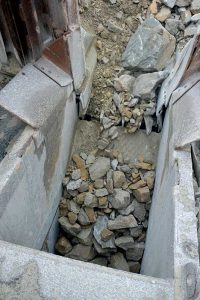
Of course, all of these measures come with tangible costs to businesses. OSHA estimates the requirements in the new standard will cost employers $1.03 billion each year, with nearly two-thirds of the annual expenditure ($661.5 million) dedicated to engineering controls that mitigate silica.
Respirators ($32.9 million) are another cost tied to compliance.
“Employers are required to use ‘engineering controls’ such as vacuum dust-collection systems and water-delivery systems to limit worker exposure to respirable silica dust and use respirators as required,” says Joe Nasvik, who has more than 40 years of experience in the concrete and decorative concrete industries.
OSHA has even assigned engineering and work practice control methods to specific equipment and tasks. For example, when using vehicle-mounted drilling rigs for rock and concrete, employers can be in compliance in one of two ways: Use a dust-collection system with a close-capture hood or shroud around the drill bit, with a low-flow water spray to wet the dust at the discharge point from the dust collector; or have employees operate from within an enclosed cab and use water for dust suppression on a drill bit.
No respiratory protection is required for employees in the vehicle-mounted drilling rig for rock and concrete example, but OSHA does specify which equipment and tasks require use of respiratory protection.
“This entire effort ties back to keeping people safe,” Nasvik says. “There is no cure for silicosis or other silica-related diseases, so worker health depends on limiting exposure. Although regulation is sometimes viewed as limiting productivity, in this instance it can actually be enhanced. The respirable silica dust regulations require use of already accepted control methods that make implementation easier.”
In addition to engineering controls and respirators, medical surveillance ($96.4 million), exposure assessments ($96.2 million), familiarization and training ($95.9 million) and written exposure plans ($44.3 million) are among the other big expenditures tied to compliance. But OSHA estimates that nearly $8.7 billion in annualized benefits will be realized as a result of the costs employers take on.
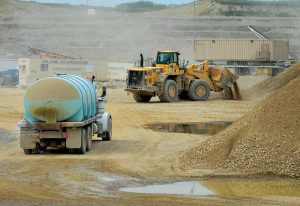
Non-compliance with OSHA’s standard comes with a cost, as well. One serious violation could cost an employer up to $12,675, while a willful violation can be assessed at up to $126,749 per affected worker, Abrams notes.
So what’s next?
Although an MSHA rule on silica isn’t immediately coming down the pike, it’s likely only a matter of time before one does.
“In construction and demolition, they’re often in close proximity to neighbors,” Lewis says. “Aggregate operations are sometimes in the middle of nowhere – some of them are in close proximity to neighbors – but they’re not noticed as much.
“With this coming into effect, I’m sure [aggregate producers] are going to have a little bit of a rude awakening,” he adds. “They’re going to have to act fast.”
Consider some key sources of dust at aggregate operations. Dust is produced at primary crushers, at conveyor belt transfer points and at load-out areas. Could these be among the areas targeted for future enforcement?
“Silica is affecting a lot of different industries,” Lewis says. “If you’re demolishing, there’s concrete in there. If you’re crushing stone, that’s silica. So this is transcending a lot of industries.”

